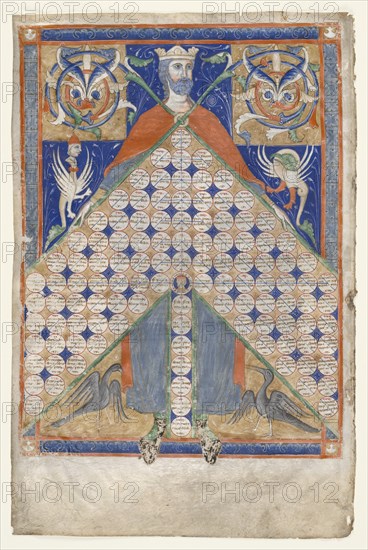
Sujet
Leaf from Gratian's Decretum: Table of Consanguinity, c. 1270-1300. Creator: Unknown.
Légende
Leaf from Gratian's Decretum: Table of Consanguinity, c. 1270-1300. These leaves were excised from a copy of the handbook of canon law known simply as the Decretum written by Gratian, an Italian Camaldolese monk, in Bologna around 1130-40. The Decretum was widely copied and consulted throughout the Middle Ages. Consanguinity diagrams were used to show the degree of kinship between an individual and his or her "blood" relations. These tables followed an established tradition dating back to around ad 600. Until church law was relaxed in 1215, a marriage could only be contracted by persons separated by seven degrees of relationship. After 1215 the degree of separation was reduced to four. Tables of Consanguinity were therefore used by church officials to regulate marriage.
Crédit
Photo12/Heritage Images/Heritage Art
Notre référence
HRM19F91_108
Model release
NA
Property release
NA
Licence
Droits gérés
Format disponible
73,3Mo (7,6Mo) / 35,1cm x 52,3cm / 4145 x 6182 (300dpi)